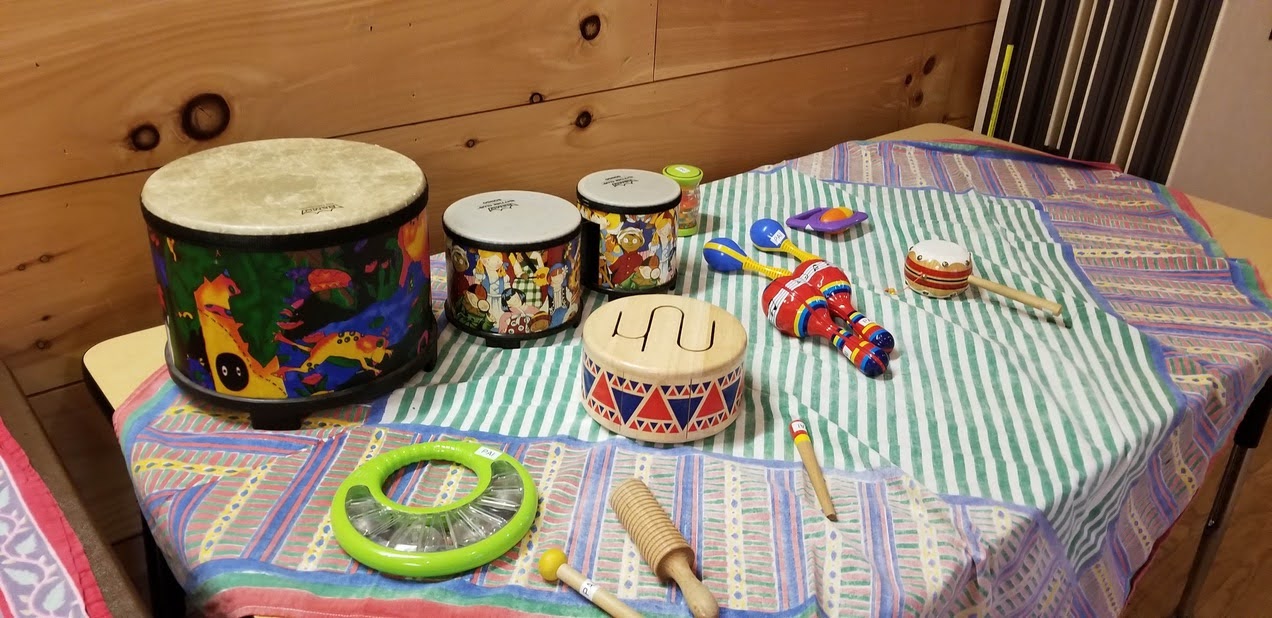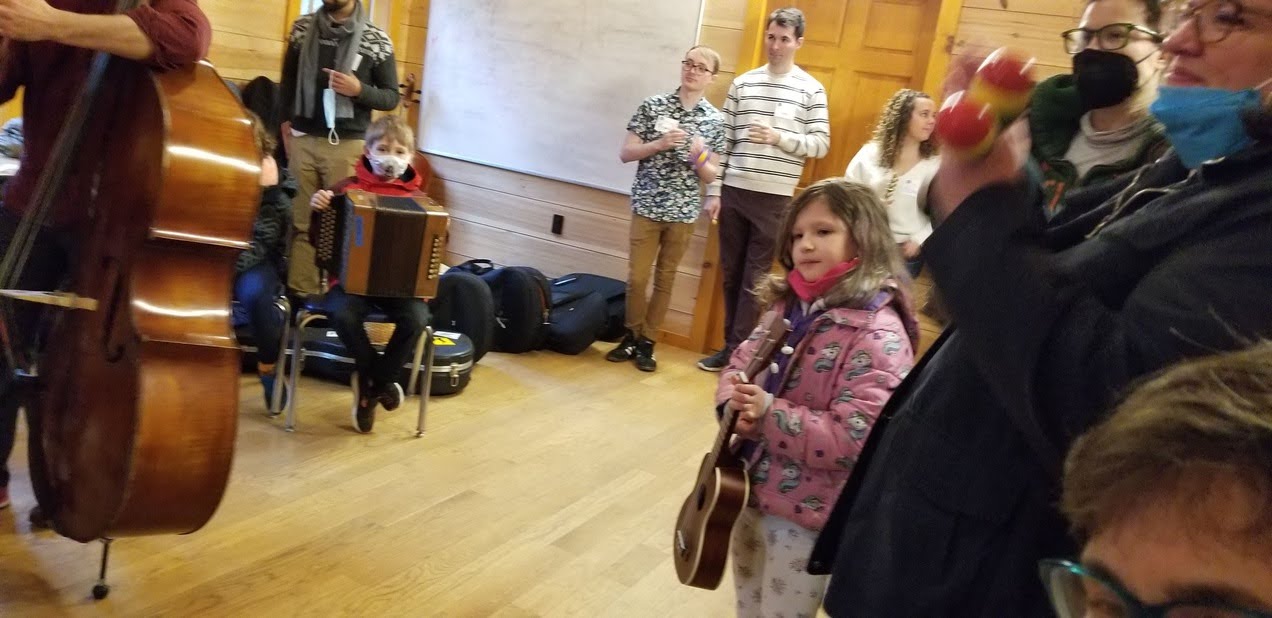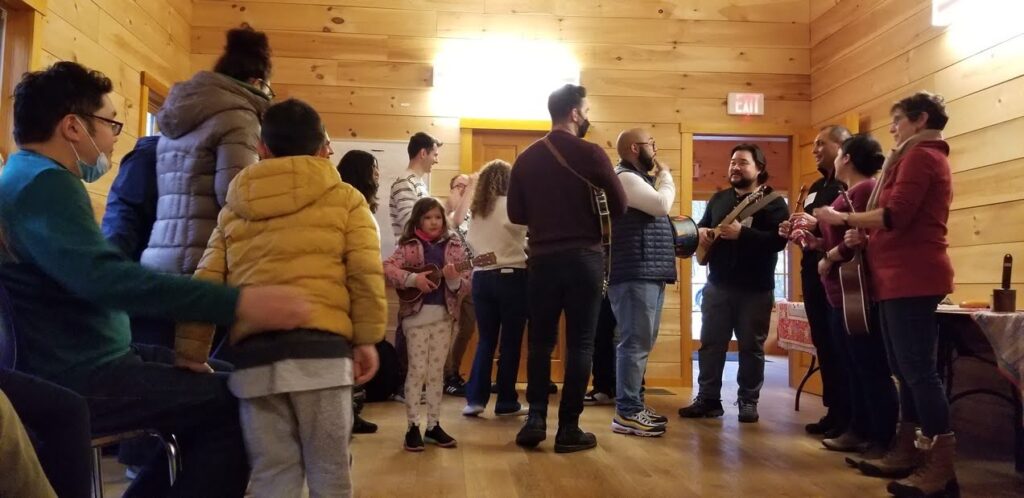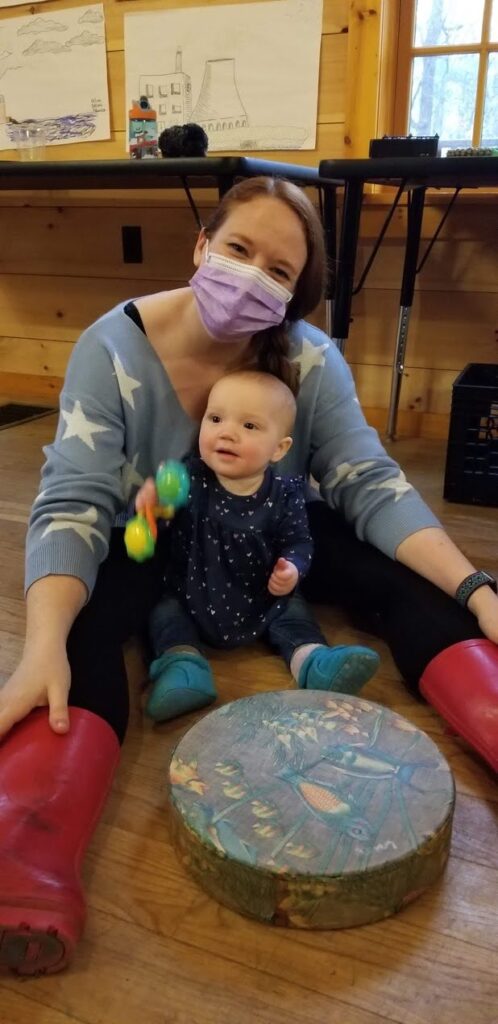- A comfortable gathering place
- Skilled musicians/educators
- Folks of all ages willing to take risks and play together
- Instruments and noise makers of all kinds
- Food and drink if desired
- Time to share your creations with one another and to debrief
Once you gather these ingredients, put a large piece of paper on a wall or easel: “What is a time when you found joy?”
Have a stack of index cards, markers, name tags, and a big bowl.
Ask the participants to write their answer to this question on a card and put it in the bowl.
Next, gather around the musicians. They will do short improvisational pieces on a few of those answers. It will be awesome to hear their interpretations. They might share a piece on “My Morning Coffee,” that is a wonderful movement from sleeping to slowly feeling the effects of that first cup. They might share a piece about riding a horse in Wyoming, where the musician is from.
If you aren’t a musician, you may feel intimidated. “I can’t do that,” you may be thinking. “I don’t play the bass, mandolin, saxophone or [name the instrument]!” Don’t worry! Take a breath. Have faith. There are sticks, maracas, claves, tambourines and small drums on the table. And it’s fun (and sounds pretty good) to strum a ukulele, even if you don’t know how to play one. Someone brought bells and spoons! And there’s even an aging accordion. That is so fun to play!
Divide into equal groups (so that the musician-educators each have a group). Grab an instrument or noise maker, or use your body as your instrument. Go to three separate areas so you can focus. (It’s okay if you see each other).
Next, pick three cards. Yes, you are going to do the exercise/activity three different times. Introduce yourselves to your teammates. Maybe you’ll be lucky and have a 6-year-old in your group who says, “I have stage fright but I play four different instruments.” She may become the leader/conductor for your group.
The group facilitator asks for three cards. Someone runs back to the bowls and randomly picks three. “Getting a puppy for the first time,” “Going to the Garden Center and picking annuals in the spring,” “Graduation.”
“What do you think?,” the facilitator asks. “What’s the story about getting the puppy?” Immediately the 6-year-old answers. “It’s such a surprise. I’m just sitting on the couch, and suddenly my mom comes in with this HUGE box! I’m so happy, I start crying.”
The rest of us chime in. “Right! You cry with happiness and then you start playing with this little dog. You have to be gentle because the puppy is scared. Your tears change to joy, right? ”
The little girl nods with a big smile and big eyes. “And, then I laugh so much!” (This was her card!)
We work through the piece. There are ten of us, and only a few of us actually play an instrument. That doesn’t seem to matter. We are telling a story with sound and emotion. First we all play quietly to represent ourselves sitting, kind of bored, on the couch. Our sound and rhythm are repetitive. Nothing much is happening. Then, someone walks in, carrying a big heavy box. “La, La, La” we sing in ascending notes and stamp our feet. We are walking under a strain of weight. We repeat that. The box is opened, and there is a cacophony of sound as we delightedly see our new puppy. Every instrument is being plucked, banged, rattled, and shaked. It’s a glorious noise, and it crescendos so much that suddenly we are crying. It’s altogether too much for us. We have waited our whole lives for this moment.
The music changes from this chaotic sound to more controlled laughter. We are hugging the puppy. Gentle. And laughing with joy. End. The conductor motions us to stop. The 6-year-old is satisfied.
We have to rehearse all these parts and changes again and then move on to our other cards. Time flies. We don’t have stage fright anymore. When it’s time to perform for the other groups, we are ready and convinced that we have communicated our moment of joy perfectly.
We are audiences for one another, and when we have finished sharing, we thank the musicians for being such awesome facilitators. We all agree that this was super fun to do, especially in mixed- aged groups with family members. And after a long and isolating pandemic, we need to move and make music together: we can all be musicians!







